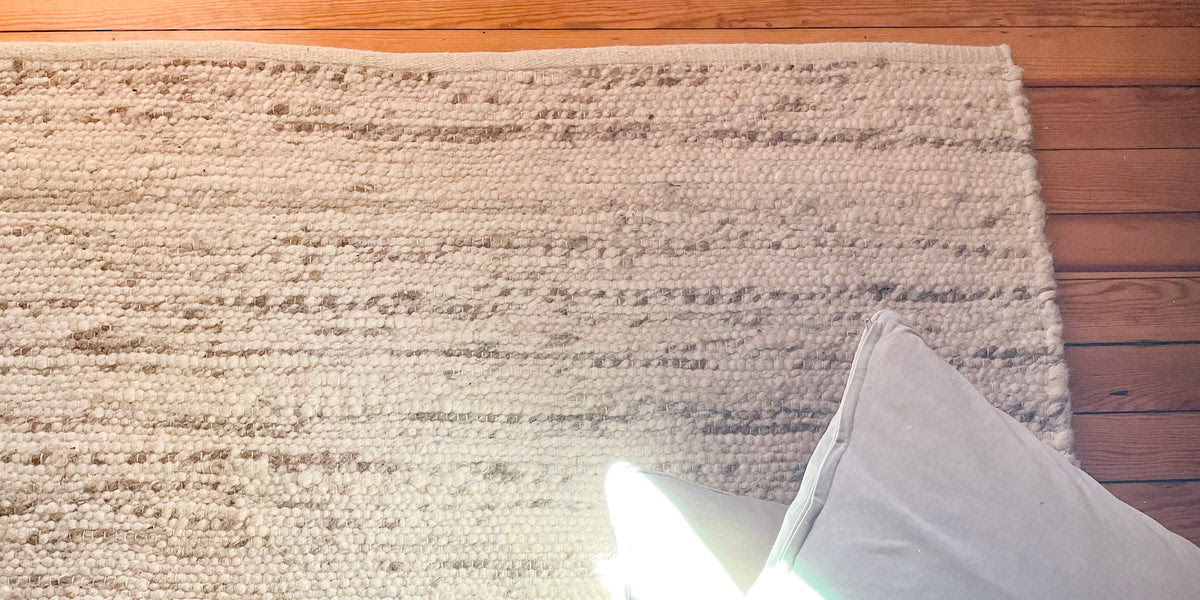
Tips for a more energy efficient home that *anyone* can tackle
Renters and less-than-handy homeowners rejoice! This is for you. Realistically, most of us have fewer resources (money, time, know-how, etc.) for home improvement than we'd like. Most of us would also appreciate a more energy efficient home - whether that's for environmental reason, financial reasons, or both.
This is not a sales pitch. In fact, it's a fix-what-you-have pitch. I promised this content in the dead of winter, when people are most likely to be thinking about ways to make their homes more efficient, if only to keep them warmer. But did you know that refrigerants (i.e. air conditioning, freezers/fridges, etc) are one of the greatest contributions to greenhouse gasses on this planet And, logically, we can measure 2-3 times higher refrigerant emissions in the summer, largely due to air conditioning. So this info isn't so poorly timed after all.
I rent an apartment in a 100-year-old converted house, and I don't have any major intentions to put much money into someone else's property. But I still want it to work for me in the meantime. That, and the whole apartment only has one gas heater and one electric space heater in the winter and no air conditioning, so creativity is entirely necessary to my comfort. I tell you this because I think these tips will be really useful to folks who often feel like they have few options for improving their homes. I applied several of these fixes to my apartment before winter last year and saw a 25% reduction in my energy usage. Correlation isn't causation, but I know my home was also considerably warmer this year than last.
It's a long one, but I hope I made it pretty skimmable, so that you can find the parts that apply to you and your life. Let's get to it.
Windows & Doors
Most of this information is about windows and doorsIt doesn't take long to understand why windows and doors are likely to be the largest sources of energy loss in your homes. The older your home, the more poorly sealed it is likely to be. I could get very middle school science-y about the laws of thermodynamics, but I'll spare you. I think we all know that we want to keep the hot in during the winter and the hot out in the summer. We all want what we don't have. It's science.
If you can stand near your doors and windows in the winter and feel the cold (or worse, actual moving air), you will accomplish a lot by covering gaps and insulating. You've got several easy options.

Weather Stripping
This fix hits the crosshairs of easy, affordable, and effective. The tops and bottoms of your windows, all sides of doors, anywhere you know air is flowing and shouldn't, weather stripping. Is it cute and plastic-free? No, but it works really well, should last you a couple years, and should be totally hidden when doors and windows are closed.
Silicone Door Seal
Old doors = gaps all around. Cover bottom-of-the-door gaps with door seals. I like ones that both stick on and then get reinforced with tacks of nails, like the one on my front door pictured below. The gap under my door isn't consistent, and this was easy to adjust as I applied it to reflect the change in the space needing coverage. It has the added benefit of keeping pests out.

Seal Off Unused Doors
This one is rather niche, because most people don't have whole doors to the outside that they're not using, but I have one in my bedroom. Covering the bottom half of the door (the top is a window, and I like sunlight) with reflective thermal insulation made a DRASTIC difference in the temperature of my room. I simply used masking tape to hold it to the wall (again, renter) and pushed my dresser in front to cover the ugliness. Tools needed: Scissors, masking tape, insulations roll.

Window Coverings
Under warm and sunny conditions, keeping direct sunlight out is a great way to keep temperatures down without having to crank up the AC. I know most of us want our home full of sunshine when we're home, but consider drawing the curtains when no one is home. When it's cold, thick curtains work to physically insulate those significant weak points in your home's barrier from outside temperatures.
Surface Insulation (but cute, obvs)
The older your house, the less likely it is that your exterior walls are providing ideal insulation from the elements. The same goes for floors and ceilings, actually. So, any surface that is exposed to the outside, or to an unfinished basement, or to a poorly-insulated attic/crawlspace is losing precious heat in winter. I don't have any DIY advice for you ceiling. However, I have experienced firsthand the impact of wool rugs where there was just bare floor - and the same goes for walls. Hanging rugs on walls is a tactic used by people all over the world to help insulate their homes for centuries. It's actually one of the traditional applications of the frazadas we carry, but you can also think about the large tapestries found in museums representing cultures from literally every continent. If you have rugs you're not using, this is a super affordable option. If not, it can be on the pricey side, depending on your approach. But either way, there are solid wool rugs in the world that can serve the purpose without being loud about it, like the one below that I snagged on major discount from West Elm at some point. It's currently on my floor, but is supposed to make it to the wall rather soon. I call this method Insulation by Design (TM). Kidding... kind of.
This also applies to the benefit of cushioned headboards.
Walls and Floors

Outlets
Poorly-insulate outlets are a surprisingly potent source of lost and intruding heat. I think modern contractors/builders insulate them. Every time I've removed a faceplate in the decades old buildings I've always lived in, the outlets are not insulated. The outlet pictured below is in my bedroom (a place I've clearly focused on insulation improvement, for obvious reasons). It was not only uninsulated, but missing chunks of wall around it and I could literally feel wind entering through it. I went to Lowe's and bought outlet insulation. You'll notice my *special* circumstances mean I needed to get creative in order to fully cover the opening, but ideally yours will fit without improvisation. It's possible other materials could be reused for this, but I don't mess with electrical stuff in old homes, so I did this buy the prescribed book. I also bought a much larger faceplate for the outlet to hold the insulation in and cover the gaping hole - if that wasn't apparent.

Proximity
The most significant goal of heating or cooling a home is to keep humans/animals comfortable. Sometimes, that means just moving the head of your bed or the couch you hang out on away from an exterior wall is enough to remove you from the source of the temperature change and keep your comfortable.
General Temperature Control
Timing & Expectations
A great way to waste energy and contribute to greenhouse gas emissions (and a higher energy bill) is to insist on keeping your house cool/warm when no one is home. This is an obvious one, but it's worth looking critically at our very American understanding of inside temperatures: HVAC running around the clock, frigid inside during summer, sweltering inside during winter (like, hotter than we would tolerate in summer without turning on the AC).
Air Movement
You can improve the efficacy of your heating and cooling by using your ceiling fans appropriately (if you have them). In the summer, your fan should be rotating counterclockwise to pull warm air off the floor level. In the winter, the fan should be switched (usually a black switch just above the blades) to rotate clockwise and push the warmer air that has risen to the ceiling back down to the lower half of the room.
If you don't have a ceiling fan and want to create a cooler environment in the summer, opening windows on opposite sides of your home is important to creating an effective cross-breeze. Two windows on the same side of your home will only really affect that room. A single window does little to nothing, depending on the pressure in your home.
Wrapping Up
It's unlikely that you can use every piece of information in this email, but every step you do take is a step in the right direction. We're working particularly hard to get you as much useful information this month as possible, because happy Earth Month, y'all! We've also added a blog post about composting by a local who is making just these kinds of shifts in her life, too. Get on our mailing list (bottom of the homepage), on our blog, and on our Instagram to catch it everywhere it drops.
Cheers y'all,
Gillie

Comments
Leave a comment